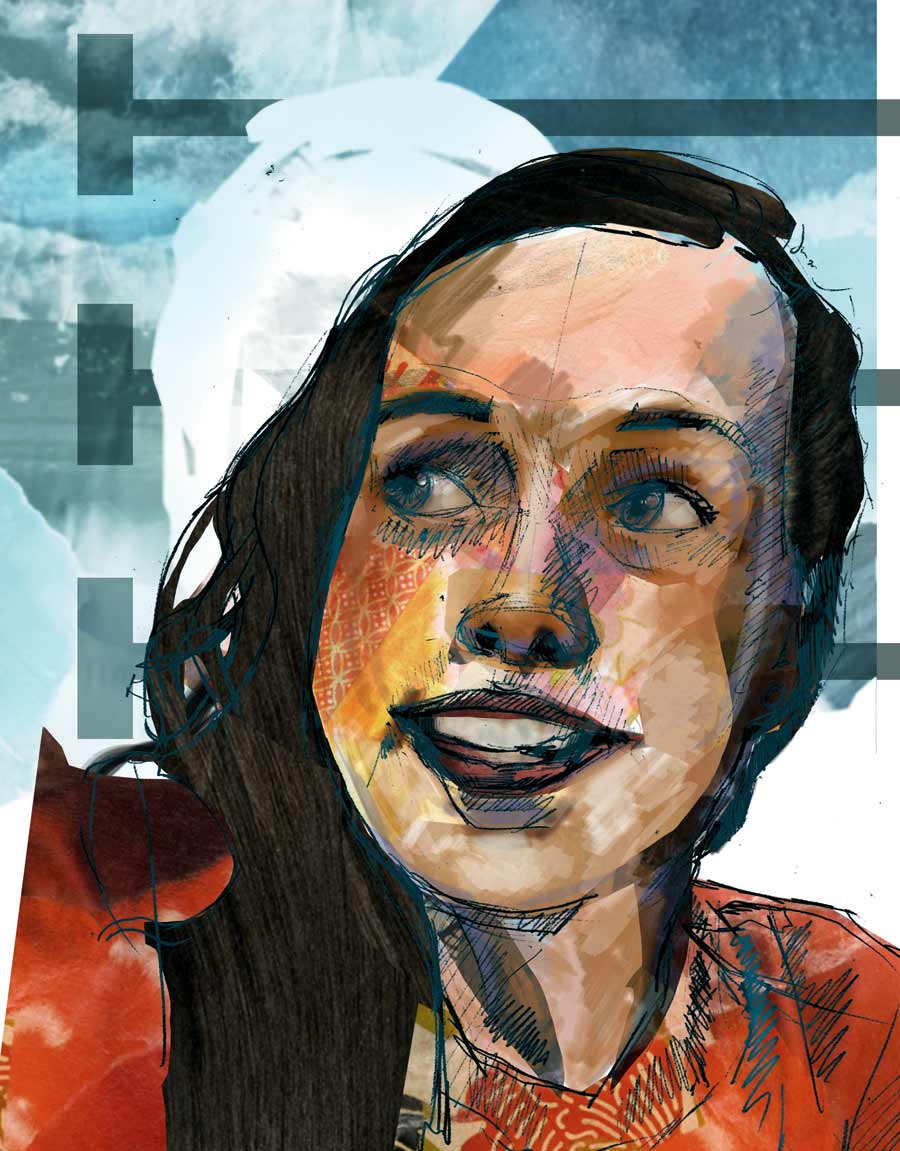
Athlete in residence Morgan Bird, by artist in residence Jason Skinner, Creative Commons Attribution-NonCommercial-ShareAlike 4.0 International License
MY first experience in a competitive swimming atmosphere was at a rookie camp, to “test the waters” and truly find out if I had the desire and motivation to become a swimmer.
My coach saw my potential and was reluctant to let me pass up the opportunity that could be within my reach if I stayed in the sport. Knowing nothing about “para-swimming,” it was both a surprise and a relief to find out about a whole other side of the sport. My coach briefly explained the somewhat complicated classification system in para-swimming, what it was and how it works.
As in able-bodied competitive swimming, competitive para-swimming also has four different strokes included within its sport. They are: freestyle (front crawl), butterfly, backstroke, and breaststroke.
The classification system is split up into three different categories: S, SB, and SM. S means swim, which includes the strokes freestyle, butterfly and backstroke. Breaststroke has its own category, SB. The reason for that is because most of the para-athletes bodies adapt differently for breaststroke, which is unlike the other three strokes. SM stands for individual medley, which is a combination of all four of the strokes together.
The next part of the classification system is the numbers. In swimming, the numbers range from 1-14, with 1 to 10 describing physical disabilities – 1 being the most severe, 10 being least severe.
An example of a lower level physical classification would be someone missing all four limbs, using simply their torso to move forward in the water. An example of a higher-level physical classification would be someone missing some of the fingers on one hand. 11-13 describes visual impairments.
If you are visually impaired, you are required to wear black-out goggles, painted over in order to eliminate the ability to see. Someone with an 11 classification is completely blind, whereas if they are a 12 or 13, they are partially blind. Finally, 14 describes someone with an intellectual disability.
You get classified as you grow and improve, as well as if someone else protests it. Anyone can challenge your classification.
When someone protests a classification, it is controversial, because although it is a part of being in para-sport, some swimmers do take it personally. For whatever reason, somebody believes you belong in a different class. The final decision, however, is up to the classifiers.
Some may think the classification system is flawed in some ways,1 but it is currently the best system para swimming has.
[Tweet “Some may think the classification system is flawed, but it is currently the best system para swimming has.”]The classification process includes an on-land bench test, as well as an in-water test. The classifiers watch you do a series of movements on land, and then proceed to watch you swim laps while they critique your stroke. This determines your final classification.
Personally, I have been classified twice after my S10, SB9 and SM10 classification was protested. My current classification is S8, SB8 and SM8, and will likely stay that way for the rest of my swimming career.
Two years after I started swimming, I was introduced to the classifying process at a one-day workshop. The swimmers and parents were informed about how classifying works. The swimmers were later taken and watched by coaches and therapists as they did a series of physical tests both on land and in water. I was classified in April and went to my first official event as a para swimmer in July that same year, the Summer Games in Red Deer Alberta, representing Calgary.
I did well there, and my performances motivated me to continue with swimming. Fast forwarding to 2015, my next big meet is the CAN-AM Para-Swimming Championship and world championship trials from March 20 to 22 in Toronto, Ontario, at the Toronto Pan Am Sports Centre.

This work is licensed under a Creative Commons Attribution-NonCommercial-ShareAlike 4.0 International License.
- During the 2012 Paralympics in London, International Paralympic Committee governing board member Patrick Jarvis said the classification system was “inherently unfair” amid complaints from US athletes. ↩

